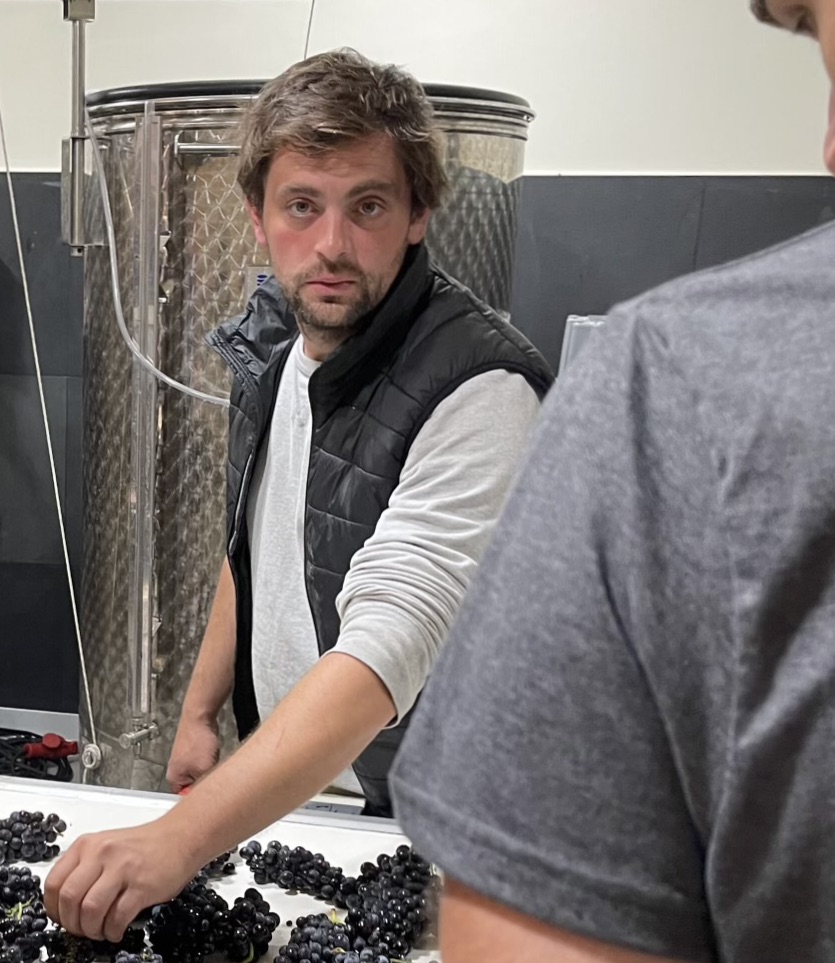After setting up Domaine Moron-Garcia in Nuits-Saint-Georges in 2016, this Nuiton took over the reins single-handedly to implement a viticulture and winemaking model as ambitious as it is demanding. An immediate success. Proof that, in this appellation, it’s possible to do things very well, differently. Here’s how it works.
Did you get into wine very early on?
Coming from Nuits-Saint-Georges, I’ve always been surrounded by the sons and daughters of winegrowers. Especially since my mother, a French teacher, had them as students at college. So I soon started picking grapes. But I didn’t show much interest. The rather conservative practices of the appellation probably didn’t appeal to me. Until, one thing leading to another, I was given a few responsibilities in the winery. I was hooked. To the point of studying wine again in Beaune. Meanwhile, my father, a geologist-sedimentologist and founder of the Artehis laboratory, was commissioned to write the scientific charter for the Climats de Bourgogne World Heritage site, thus gradually becoming the region’s leading terroir scientist. Add to this the opportunity to team up with a childhood friend, Mathieu Moron, to take over some of his family’s night parcels, and in 2016, the Moron-Garcia domaine was born…
With what desires?
To bring our plots back to life in an appellation with conventional practices to say the least, to bring in more biodiversity and, who knows, to influence our neighbors’ processes. On the winemaking side, I’ve implemented and refined the berry-by-berry technique I experimented with during my studies. As soon as they are cut, the bunches are chilled to 5°C so that they can be handled without disintegrating. Then, using long scissors, they are detailed by hand, berry by berry, without releasing any juice. Goldsmith’s art. No machine can do this.
What’s the point of berry-by-berry?
In vats, with 1/3 whole grapes and 1/3 destemmed grapes, the remaining 1/3 berry by berry is a precursor of aromas. This infusion develops floral notes in particular. The wines become more supple and less tannic. All the same, it takes a lot of organization. Starting with two refrigerated trucks, or even three, at harvest time. This is our only exception, since we are careful to conserve water and our vats are not temperature-controlled. Secondly, the berry-by-berry process requires a lot of time and manpower. Whereas on a conventional sorting table, a dozen or so operators process 350 kg of grapes, equivalent to a 228-l barrel, in a quarter of an hour, there are thirty of us working for an entire day. During the 2023 harvest, over 90 people lent us a hand for almost a month. This is invaluable help, as long as it’s well-trained and understands the importance of the work involved, so that it can be carried out with the utmost care.
And what about sulfur?
The big question of the moment… This is the other advantage of bay-by-bay. There’s so much sorting upstream that, since the first vintage, I’ve never needed to use sulfur during alcoholic fermentation. Afterwards, in malo, I use it of course, but in very reasonable doses. I export my wines… I’m not anti-sulfur, but I don’t like systematisms. Especially when their usefulness has not been scientifically proven.
Now to the winegrowing side of things, how do you work?
Even today, a large part of our production comes from the trade. Organic grapes only. Land is at such a premium in Burgundy… So I have around 2 hectares, divided into small plots. Here, as in the vats, the berry by berry approach sets the tone. Let me explain. With global warming, like other winegrowers, we’ve raised the vines to 1.80 m, or even 2 m, to create more shade. While this protects us more from drought, it also means that the bunches are longer, making them easier to sort. On the other hand, the leaf surface area is enlarged and the plant’s need for water increases. To compensate for this, I advocate a practice that is still relatively uncommon in Burgundy: sowing leguminous plants. Between the rows, planting peas, parsnips, clover, faba beans, daikon radish and other taproots decompacts the soil and, what’s more, brings more life and biodiversity.
What’s your assessment today?
Our 9th vintage is in vinification. Each terroir is isolated. In fact, given the myriad of small plots we have at our disposal, some twenty references are produced: 18 reds and 4 whites. All aligotés. More acidic intrinsically, they react better to warmer weather. Conversely, I’m having trouble recapturing the taste of the Chardonnays I grew up with. In total, by 2023, this will represent 20,000 bottles. That’s our maximum capacity, given our infrastructures and practices. Unfortunately, that’s not enough to meet demand. The result? Prices are skyrocketing in the 33 countries where we are present… Even if every bottle is traced, it’s difficult to combat this speculation. It would be a full-time job. Running the estate keeps us busy enough. My aim is not to make money, but simply to make a sustainable living from my work.
What about tomorrow, now that you’ve reached maximum production capacity?
Our aim is to stabilize this model. Every year, friends, customers and sommeliers mobilize for the harvest… We’re also going to finish restoring the buildings and continue experimenting to further optimize our processes. We need to make them sustainable. All the more so as the word is spreading about them. Mentalities are changing, perceptions are evolving. In less than 10 years at Nuits-Saint-Georges, we’ve gone from « crazy » to « visionary »…

